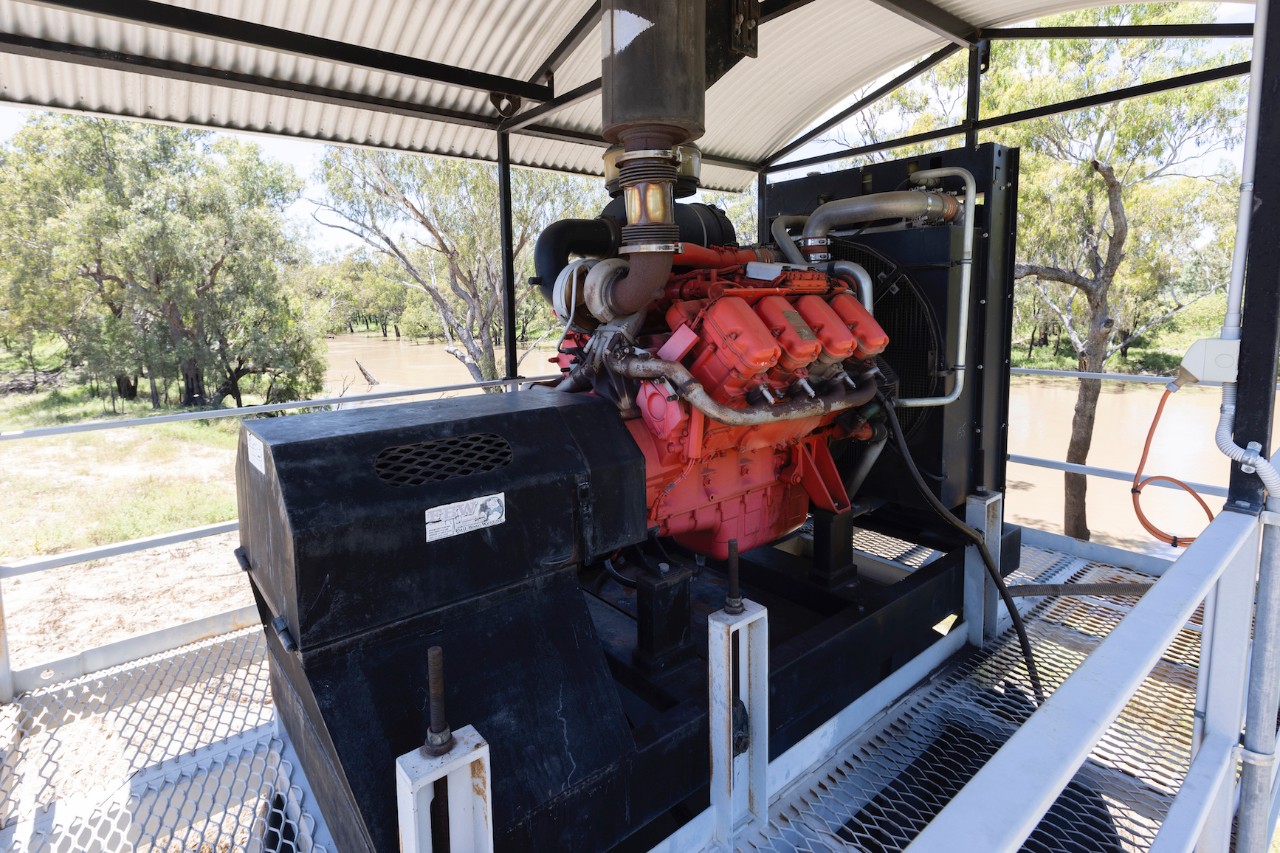
A full house
Jason Sinclair manages a property that runs the full range of Scania irrigation engines.
Jason Sinclair 4000-acre Lakeland Downs cotton farm at Condamine and has worked on the property for 20 years.
The farm is home to the full gamut of Scania irrigation engines, with examples of the five-cylinder, six-cylinder and V8 engines all pumping water either from the Condamine River into the nearby lagoon, or from the 1000-megalitre lagoon to water storages or irrigation channels.
Jason’s story is one of admiration for the Scania engines, particularly the big V8 16-litre unit that stands on a tall tower at the edge of the river.
“I just love the Scania V8,” he says. “This motor is very robust. It has run for 3501 hours over eight years, consuming exactly 170,334 litres of fuel, which equates to an average of 48-litres per hour. That’s impressively low for a motor running a 26- inch China pump that sits 11 metres below the engine in the tank, driven via two drop belts. Previously the engines we had on this job would use up to 65-litres of fuel per hour.
“Our gearing means the pump runs at 740 rpm, and we stop the motor and climb down to inspect the pump and the belts every day,” Jason says. “Using two belts for the drop keeps better tension and enhances the belts’ working lives.
“We have a six-cylinder motor pumping 100-megalitres a day, using only 25 litres per hour, because it is not lifting the water so high. The fuel savings over our other non-Scania brand engines are significant,” he says.
“Since we installed these Scania motors we have not looked back,” Jason says. “The modularity of the engines helps, as the three different motor configurations largely use the same spare parts, and they all use the same grade and quality of oil, which also provides a simplification for on-going maintenance. There’s not going to be a mix- up putting the ‘wrong’ oil in one engine or the other.
“We run the V8 engine for around 350 hours per year, some months the engine is running continuously, day and night when pumping out of the river. When we get our allocation, we need the pump ready to go, so the motor must start on the button.
“We have 4000-megalitres of storage, and our storages are full now because the river has been running very high, so we have been pumping.
“We have some redundancy, with another Scania engine able to pump out of the river, which was handy when the V8 engine’s pump centre bearing went, and we had to run the second motor while we fixed the pump. When the water’s coming you can’t sit and watch it go by,” Jason says.
“The five- and six-cylinder engines are used for irrigation. We’re irrigating 1200 of the 4000 hectares, we have some dry land grazing and some dry land cotton. The price of cotton is high now so it’s worth planting. I like to rotate the cotton fields yearly so we’re usually 50/50 on growing and resting.
“I have worked here for 20 years and currently there are just three of us looking after the property. I’ve seen fires and flood, I’ve seen the river bone dry, but in 2022 it hasn’t stopped running since February. We had a big flood that came right up to the engines at the side of the river, so we had to move them.
“With the first six-cylinder installation we have built a frame to hold the motor that we can easily move to a higher locating pad nearby if the river floods again, as well as fixing a snorkel to the inlet to ensure the engine doesn’t ingest any water.
“We have had such a good run with the Scania engines, they are very reliable and long lasting and very efficient. I’m waiting for our other non-Scania engines to reach the end of their lives so I can replace them with new Scanias. They’ll be far less trouble. With some of the other engines we have had their technicians out here all the time, but with Scania, Nick Rowe just comes to do the servicing.
“We change the oil every 250 hours, as a preventative measure and every 1000 hours Nick comes out to give the motor a check over and do the valves. We would change the injectors and turbo at 30,000 hours,” Jason says. “The combination of the robust engines and Nick Rowe’s servicing means that we don’t need to worry about our pumping performance.”